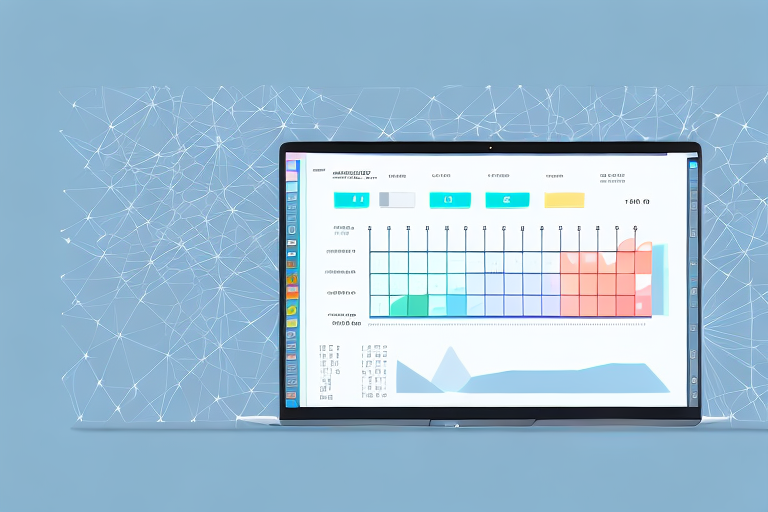Step-by-Step Guide to Configuring Tax Settings
As a business owner, configuring tax settings may not be the most exciting task, but it is a crucial one for success. Properly set tax rates ensure that your customers are not overcharged or undercharged for taxes on their purchases. It also helps prevent legal problems down the line and keeps your business in compliance with state and federal tax laws. In this step-by-step guide, we will cover all the information you need to know to properly configure tax settings for your business.
Understanding the Importance of Tax Configuration
Tax configuration is a critical part of any e-commerce platform. Your online store must comply with tax laws, and customers expect to see accurate pricing that includes any applicable taxes. Proper tax calculations prevent you from losing money or customers due to overcharging or undercharging taxes. Poorly configured taxes can result in incorrect taxation, wasted time, and lost revenue. Therefore, it is essential to understand the importance of tax configuration in your business.
Avoiding Legal Issues
One of the key benefits of proper tax configuration is avoiding legal issues. Tax laws are complex and vary from state to state, making it important to ensure that your online store complies with all applicable regulations. Failure to comply with tax laws can result in hefty fines and legal penalties, which can be detrimental to your business.
Gaining Competitive Advantage
Proper tax configuration can also help you gain a competitive advantage. By offering accurate pricing that includes taxes, you build trust with your customers and improve their overall shopping experience. This can lead to increased customer loyalty and repeat business, ultimately driving revenue growth for your online store.
Accessing Tax Settings in Your Platform
Accessing tax settings varies depending on the e-commerce platform you’re using. However, most platforms categorize tax settings under "Store settings."
Shopify
On Shopify, navigate to Settings > Taxes to access and modify your tax settings.
WooCommerce
If you’re using WooCommerce, go to WooCommerce > Settings > Tax. From there, you can configure tax rates, tax classes, and tax options. Ensuring your tax settings are accurate and up-to-date is vital to avoid any legal or financial issues.
Types of Taxes You Can Configure
There are various types of taxes you can configure, such as state, county, and city taxes. Some jurisdictions impose specific taxes on certain products or services, like a luxury tax on high-end goods. Depending on your business type, you may need to configure different types of taxes in your settings.
Tax laws and regulations vary significantly between different countries and even between different states or provinces within a country. Staying up-to-date with the latest tax laws and regulations in your area is crucial to ensure that you’re configuring the correct types of taxes and charging the appropriate rates. Failure to do so can result in penalties and legal issues for your business.
Setting Up Basic Tax Rules for Your Business
The first step to configuring your taxes is to set up basic tax rules for your business. Basic tax rules identify which products or services are taxable or non-taxable. You can specify this rule for individual products or apply it to all your products and services. For example, if you sell legal services, you may want to configure taxes based on the service location or the client's state.
Tax rules can vary depending on the location of your business and the jurisdictions in which you operate. It is recommended to consult with a tax professional or accountant to ensure compliance with all applicable tax laws and regulations. Additionally, keeping accurate records of all tax-related transactions and filing your taxes on time helps avoid penalties and fines.
Configuring Advanced Tax Rules for Specific Products and Services
If your business has different tax rates for specific products or services, you’ll need to configure advanced tax rules. Advanced tax rules determine the percentage of tax to apply to specific products or services. For instance, a product subject to a luxury tax will have a different tax rate than an item that isn’t. Setting up specific rules for different products helps avoid charging too little or too much tax.
To configure advanced tax rules, you need a clear understanding of the tax laws in your area. Consulting with a tax professional or researching tax laws ensures you apply the correct tax rates to your products or services. Once you understand the tax laws, use your e-commerce platform’s tax settings to set up specific tax rules for each product or service. This ensures customers are charged the correct amount of tax for each item they purchase, maintaining compliance with local tax laws.
Understanding Tax Rates and Calculation Methods
Understanding tax rates and calculation methods is essential when configuring tax settings. The tax rate is the percentage of tax applied to a product or service. The calculation method determines how the tax amount is calculated based on the product or service’s price. There are different calculation methods, including destination-based and origin-based sales tax. Different states have varying rules and regulations on how to calculate taxes, making it necessary to understand the rates and methods applicable to your business.
Tax rates and calculation methods can change over time. For example, a state might increase or decrease their sales tax rate or change their calculation method. Staying up-to-date on these changes and adjusting your tax settings accordingly is crucial. Failure to do so can result in overcharging or undercharging customers, leading to legal and financial consequences. Regularly reviewing and updating your tax settings ensures compliance with current regulations.
Configuring Taxable Locations and Jurisdictions
When configuring tax settings, it’s essential to specify which locations and jurisdictions are taxable to ensure accurate tax calculations. Most jurisdictions require businesses to report their taxable revenues, making it crucial to track all taxable sales and ensure appropriate taxes are collected and remitted timely. Taxable locations and jurisdictions can change over time, so keeping your settings up-to-date is critical.
Different products or services may be subject to different tax rates or exemptions based on the location and jurisdiction. For example, some states may exempt certain types of food or clothing from sales tax, while others may not. Researching and understanding the tax laws and regulations in each location where you do business is crucial.
Additionally, some jurisdictions may require businesses to register for a tax identification number or obtain a tax permit before collecting and remitting taxes. Non-compliance can result in penalties and fines. Staying informed about the tax laws and regulations in each location ensures compliance with all applicable requirements.
Creating Tax Classes and Groups for Different Products and Services
If your business sells different types of products or services that require different tax rates, creating tax classes and groups is beneficial. Tax classes help categorize your products and services, allowing you to apply different tax rates to each group. For example, a clothing store can create a tax class for clothing and a separate class for accessories, each with different tax rates.
Tax laws and rates vary by location, so researching and understanding the tax laws in your area before creating tax classes and groups is essential. Some products or services may be exempt from certain taxes, so consulting with a tax professional ensures compliance with all applicable laws and regulations.
Configuring Tax Exemptions and Exclusions
Not all products or services are taxable. Some states exempt certain products from taxes, such as food or medicine. Configuring tax settings to recognize these exemptions and exclusions is necessary. Additionally, setting up rules to apply exemptions or exclusions to specific customers, such as tax-exempt organizations or government entities, is important.
Tax exemption and exclusion rules can vary by state and locality. Staying up-to-date on the latest tax laws and regulations in your area ensures your tax settings are configured correctly. Improperly configured tax exemptions and exclusions can result in overcharging customers or underpaying taxes, leading to negative financial and legal consequences for your business.
Testing Your Tax Configuration Settings Before Launching Your Store
Before launching your store, thoroughly test your tax configuration settings to ensure accurate tax charging. Place test orders and check tax amounts to verify correctness. Once you've confirmed that your tax calculations are accurate, you can launch your store with confidence, knowing you’re compliant with tax laws.
Common Issues and Troubleshooting Tips When Configuring Taxes
While configuring taxes may seem straightforward, mistakes can occur. A common issue is incorrect tax rates resulting from setting incorrect jurisdiction or product tax codes. To troubleshoot such issues:
- Double-check your tax configuration settings.
- Verify tax rates against official sources.
- Consult with a tax professional for assistance.
Best Practices for Maintaining Accurate Tax Settings Over Time
As new tax laws and changes are introduced, it's essential to keep your tax settings up-to-date and ensure compliance with regulations. Best practices include:
- Regularly reviewing your tax settings.
- Verifying tax rates periodically.
- Referring to state or federal tax regulations applicable to your business.
Keeping Up-to-Date with Changes to Local, State, and Federal Tax Laws
Tax laws and regulations change frequently, making it essential to stay informed about these changes. To stay updated:
- Subscribe to tax-related newsletters.
- Attend seminars and webinars on tax updates.
- Follow relevant tax authorities' official websites and social media accounts.
Conclusion: The Importance of Properly Configured Taxes for Business Success
Properly configured taxes are crucial for any business's success. As an e-commerce business owner, ensuring compliance with local, state, and federal tax laws while accurately charging customers is essential. By following the steps and best practices outlined in this guide, you can configure your taxes accurately, reduce errors, save time, and avoid legal consequences.






















